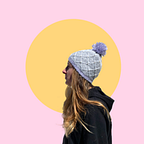How Easy is it to Create NFT Art
NFT art breathed new life into the idea that GIFs, MP3’s, JPG’s, and other digital art possess monetary value. NFT art has become a buzz word on the internet these past few weeks. Artists how originally weren’t known online emerged as self made millionaires.
What is NFT?
What is NFT? It stands for non fungible tokens. Non fungible tokens are metadata and codes that certify your digital art pieces that certify unique “digital assets.” These tokens are not transferred and are cryptographic assets. The revolution of this new art asset is that anyone who can make an animated graphic can sell an NFT art or collection on these marketplaces.
The NFT art marketplaces that have popped up recently provide spaces to buy and sell original “art,” or digital assets that can be collected. There are many different options for marketplaces you can sell on: Rarible, Mintable, SuperRare, OpenSea, and many others you can see listed here. Each piece of artwork sold is a minted collectible. Transactions take place using crypto currency, specifically Ether.
Where is the value in a digital piece of art? It’s a hotly debated topic right now. Many people are jumping on this as an alternative source of funding in order to diversify their investment portfolios. Others are enamored with this type of art, because it creates value for a form of art that would have loved to of been part of the Christies’s Auctions. Artists are either loving or hating the controversy behind 5 million dollars being made on digital art. However, this new marketplace is changing artists’ lives over night.
How easy is it to make NFT Art?
NFT art isn’t very difficult to create. If you know how to make GIFs or JPEGs, then you can make NFT art. You will need some type of software. Common programs that are used to make digital art sold on the platform are Photoshop, Illustrator, Flash, and other programs that allow people to make animated graphics.
NFT Art Collectibles
NFT art collectibles pose a unique and theoretical challenge to how we view art. I jumped into the NFT craze and decided to create a piece of collectible artwork for Rarible. Why? My art really fit the trend and the philosophical nature of this movement. I’m deeply fascinated by this idea that a watercolor painting can live on in a digital space as a digital collectible. It’s digitally minted and I will never print additional replications. In fact, I find it to be a fascinating alternative to providing prints and killing trees. I created this beautiful watercolor painting a few years ago based on a science fiction zine. A lot of the art in the NFT marketplaces play to a sci-fi, digital illustration, and futuristic theme. This collectible I created is a one of a kind that I won’t be creating prints of. It happens to be my favorite artwork I have ever created.
What did I discover?
Not only is their search engine ineffective, but the competition is already stiff. There is already a sea of digital art to compete with. A simple search for my name won’t even pull up my artwork, add the title and still nothing. It’s not easy to get discovered.
Not Environmentally Friendly
Evidently NFT art transactions cause damage to the environment, because they cause excess energy consumption. I had no idea how bad NFT art transactions were for the environment until after I already posted my art on Rarible. This article discusses the ephemeral issue of environmental impact from cryto currency. It’s unclear whether or not these articles state fact. Either way, NFT art is a newborn and this issue will become more clear as more information emerges.
At the same time, I have a problem with artists replicating their work with prints. For a long time I have wanted to create prints of my work, but I struggle with the idea that trees are being destroyed just for my art. NFT art collectibles provide this unique way of valuing my work in a way that I don’t have to kill trees. Since I donate every year proceeds from my art sales to our national forests, it’s hard for me to reconcile this trade off. I’m hoping as more information becomes available about the environmental consequences of crypto, we will know more about this marketplace.
If you want to learn how to make an NFT step by step, check out my NFT Crash Course here.
